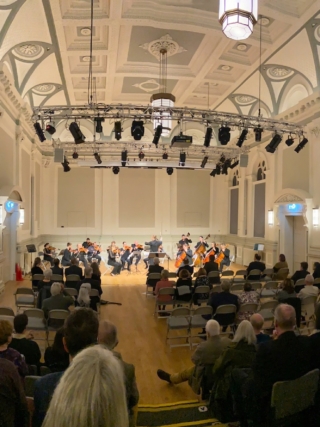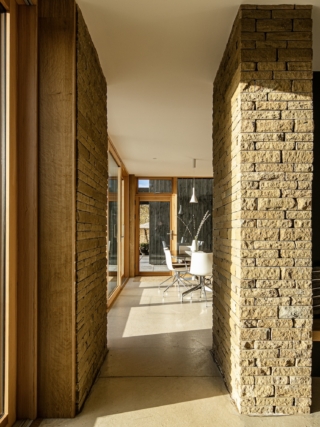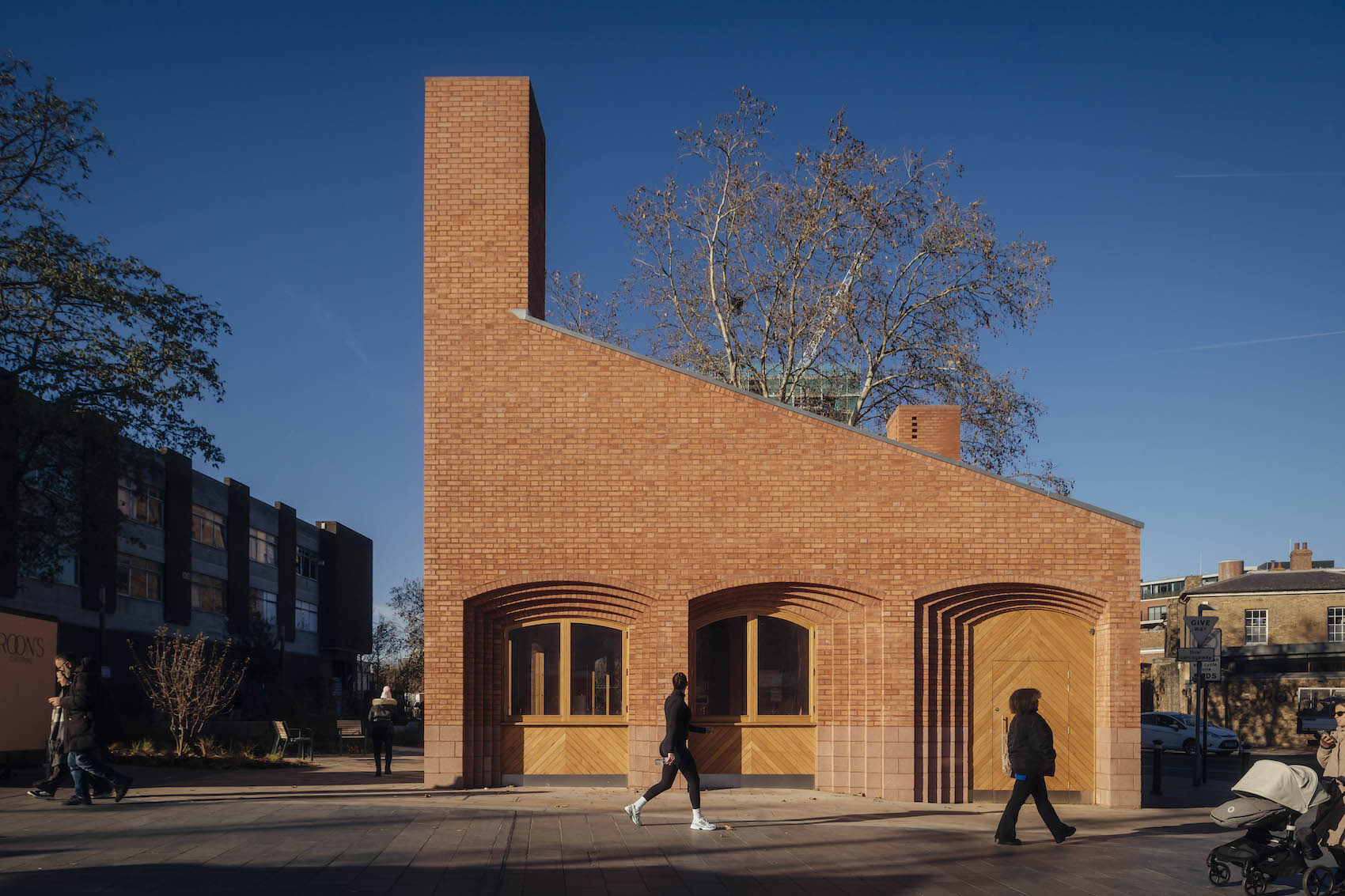Winners in the RIBA Regional Awards for the Yorkshire, South, South East and East regions have been announced, with AL_A, AOC, Coffey Architects, James Gorst Architects, Mikhail Riches and ZMMA among others named as winners.
Park Hill Phase 2 by Mikhail Riches. Photo by Tim Crocker.
Each of the named winners (see them all below) will now go on to be considered for the RIBA National Awards, announced on 11 July, which will in turn, be used to compile the shortlist for the RIBA Stirling Prize, drawn later this year.
RIBA South East Award winners
Chosen from a shortlist of 16 projects, Cobham Bowers by Coffey Architects was named as winner of RIBA South East Building of the Year Award 2024, with the jury being impressed with how a large development gives the impression of being domestic in scale, thanks to the gabled roofs which run at right angles to each other.
Speaking in a statement, Jonathan Stern, regional representative for RIBA South East, said:
“That this year’s winners come from such a broad range of scales and uses demonstrates that exceptional architecture is truly alive and well in the South East. These projects represent the very best of the region’s thoughtful architects and engaged clients.”
“Truly communal spaces at the bathing pools built into Guernsey’s rocky coast and Erith’s repurposed Carnegie Library on the south bank of the Thames, reinvigorate their communities with their own unique stories unfolding inside, whilst Cobham’s cleverly contextual and communal later-living counterpoints in scale this year’s smallest project – a wonderfully detailed floating forest lodge. Individual homes, each unique and personal, provide sweeping roofs, exquisitely crafted interiors, and an exceptional passivhaus. All are delightful buildings and very worthy winners.”
Up close: RIBA South East Award winner
Cobham Bowers by Coffey Architects.
(Read AT‘s coverage of the project here)
Photographs by Phil Coffey
What the jury said:
“This is the architects’ second project for the same client. The jury was impressed with how what is quite a large development gives the impression of being domestic in scale, thanks to the gabled roofs which run at right angles to each other.
The gables are in grey brick, with terracotta roof tiles and recessed gutters. The quality of the detailing and the careful handling of materials, from the brickwork through to the rainwater downpipes and the integration of the gardens, are worthy of praise.
The ground-floor entrance leads into a communal reception space in which events take place and group activities are organised. This is a space which residents are encouraged to use as much or as little as they like. It looks into the garden and external seating. The whole project creates a new sense of space and relates harmoniously to parks and play areas in the vicinity.
The scheme was developed with retirement living specialist Pegasus, part of the Lifestory Group. They commented on the importance of choosing architects for the project who ‘understood what it was like to design homes for older people, meaning people can age in place’. Their previous experience with Coffey Architects had demonstrated not only their exceptional design abilities, but also that they ‘recognised the value of shared and communal spaces and the connectivity between one’s home as a personal sanctuary and communal space you could enjoy with other residents’.”
Full list of the RIBA South East ‘Special’ Awards:
- Cobham Bowers – RIBA South East Building of the Year 2024
- Kingston Villa (Harry Insall-Reid) – RIBA South East Project Architect of the Year 2024
- The Mile House – RIBA South East Client of the Year 2024
- The Exchange – RIBA South East Conservation Award 2024
- Looking Glass Lodge – RIBA South East Small Project of the Year 2024
The 2024 RIBA South East Award winning projects:
- Cobham Bowers by Coffey Architects
- Eavesdrop by Tom Dowdall Architects
- Kingston Villa by Fletcher Crane Architects
- Looking Glass Lodge by Michael Kendrick Architects
- The Bathing Pools by DLM Architects
- The Exchange by Robin Lee Architecture
- The Hall by TaylorHare Architects
- The Mile House by Meloy Architecture and Design
- West Meadow by Hollaway Studio
RIBA South Award winners
Chosen from a shortlist of 12 projects, New Temple Complex by James Gorst Architects was named as winner of RIBA South Building of the Year Award 2024, with the jury being impressed with the team’s “uncompromising realisation” of an “ideological building” that has achieved “godly control of the details.”
Speaking in a statement, RIBA South Jury chair, Jennifer Dyne, said:
“This year’s winners expose the exquisite variety of architecture across the south – but what connects these projects is their capacity to care. Whether that’s caring for the environment, about accessibility, the local community or city, as well as each other and your inner self. The projects also reveal how the careful hand of an architect is able to draw buildings of complexity, clarity and composition. This trinity is exemplified at New Temple Complex, with James Gorst Architects taking home an equal trio of awards, plus Building of the Year – and for those that care about architecture, it’s worth the pilgrimage.”
Up close: RIBA South Award winner
New Temple Complex by James Gorst Architects
(Read AT‘s coverage of the project here)
Photographs by Rory Gardiner
What the jury said:
“On entering the temple you become unsettlingly aware of how unusual it is to see architecture built so perfectly – perhaps this is what happens when you allow the structural grid to be determined by dowsing. Inside pendentive arches carry a circular larch dome, formed of 48 laminated timber beams, which align to a 12-part timber ring beam, engraved with the zodiac. The veracity of the setting out makes you want to start counting, as if discovering a historic calendar house, where the architecture is built to numerological principles. The both square and circular room is of course set out to the cardinal points, with openings on each face with a west altar, and doors allowing views out to the bucolic scenery. Behind the precast arches a curve of dogtooth bricks angle to soften the acoustics, with further vestibules and changing spaces beyond.
Unexpectedly, and reassuringly, this sacred space also begets two plant rooms. Despite building regulations on energy efficiency not applying to faith buildings, New Temple Complex far exceeds requirements, with the client proving equally zealous in their commitment to sustainability. The entirely timber framed structure has eliminated the need for steel; while below the floor, an underground labyrinth ventilation system provides passive cooling with vents in the dome to expel hot air – an ancient yet effective form of air conditioning. There is also a ground-source heat pump supported by photovoltaic panels, likely benefitting from perfect orientation.
New Temple Complex should be seen and believed. It is clear that that project architect Steven Wilkinson’s presence, keeping faith from concept to completion, has enabled the uncompromising realisation of this ideological building. This rare achievement and godly control of the details is recognised, with the jury awarding him RIBA South Project Architect of the Year.”
Full list of the RIBA South ‘Special’ Awards:
- New Temple Complex – RIBA South Regional Building of the Year, RIBA South Regional Sustainability Award, RIBA South Regional Project Architect of the Year (Steven Wilkinson)
- School Green Centre – RIBA South Client of the Year 2024 (Shinfield Parish Council)
The 2024 RIBA South Award winning projects:
- Cheng Yu Tung Building, Jesus College Oxford by MICA Architects
- Chestnut Plantation by John Pardey Architects
- Maggie’s Southampton by AL_A
- New Temple Complex by James Gorst Architects
- School Green Centre by AOC Architecture
- Wadham College by AL_A
RIBA East Award winners
Chosen from a shortlist of 17 projects, Gainsborough’s House Museum by ZMMA was named as winner of RIBA East Building of the Year Award 2024 , with the jury impressed to see “a significant regional and national museum emerge from the adaptation of what was previously a small, local resource.”
Speaking in a statement, RIBA East Jury Chair, Gavin Henderson, said:
“The diverse range of projects recognised by the awards demonstrates the value that architects, working with ambitious and far-sighted clients, bring to schemes across the region.
These are projects that pay close attention to enhancing the experience and wellbeing of the people using the buildings, and to creating characterful, sustainable places of lasting value. At very different scales, whether an individual home or supporting a larger community, they demonstrate the role architecture can play in transforming lives, and illustrate that good design can, in a very real sense, be life-enhancing.”
Up close: RIBA East Award winner
Gainsborough’s House Museum by ZMMA
Photographs by Hufton + Crow
What the jury said:
“Central to the project’s approach to conservation and sustainability is the principle of allowing each building to ‘do what it does best’. Highly serviced spaces are removed from the historic house, allowing it to return to the look and feel of an 18th century home. Meanwhile the demanding and more energy intensive requirements of climate-controlled galleries are met in the purpose-built new wing. The shop and café, housed in the 19th century cottages, form part of the streetscape and a bridge between the public and paying visitors.
The careful and critical conservation applied to Gainsborough’s House itself reflects a deep commitment to maintaining historical integrity. As a whole, the project stands as a model for harmonising heritage preservation with contemporary needs and showcases creative repair and conservation, adaptive reuse of historic structures, and comprehensive refurbishment and regeneration efforts.
The new gallery wing takes its inspiration from Sudbury’s townscape, its scale and roof form echoing those of adjacent industrial buildings that still serve the town’s long-established silk weaving industry. The exterior exemplifies the inventively textured use of locally sourced materials, including bricks produced from clay extracted 2 miles from the site and local flint.
Internally, materials are robust, warm and tactile, with originality in the design of elements such as balustrades and ventilation grilles, which enriches the visitor’s experience. Juxtaposition of artwork with carefully controlled views of the surrounding town and landscape gives a palpable sense of a project that has been designed to root Gainsborough’s work back into the landscape and place he knew, but also within the setting and community in which the contemporary museum now sits.”
Full list of the RIBA East ‘Special’ Awards:
- Gainsborough’s House Museum – RIBA East Building of the Year 2024, RIBA East Conservation Award 2024
- Bluebird – RIBA East Client of the Year 2024, RIBA East Sustainability Award of the Year 2024
- The Little Big House (Fergus Knox) – RIBA East Project Architect of the Year 2024
The 2024 RIBA East Award winning projects:
- Bailey Studios by Ashworth Parkes Architects
- Beechwood Village by Pollard Thomas Edwards
- Bluebird by SKArchitects
- Creek Cabin by MAP Architecture and Jon Broome Architects
- Dining Hall, Homerton College, Cambridge by Feilden Fowles Architects
- Gainsborough’s House Museum by ZMMA
- John Bradfield Court, Darwin College by Allies and Morrison
- The Little Big House by Knox Bhavan Architects
- WongAvery Gallery by Níall McLaughlin Architects
RIBA Yorkshire Award winners
Chosen from a shortlist of 11 projects, five have been named as winners for the RIBA Yorkshire Awards 2024 – with no project being named as building of the year. Despite this, the jury was impressed with the winners for their “exceptional conservation” and “bold approach,” remarking on the architects’ “commitment and understanding” for existing buildings, as well as their ability to undertake “good engagement with the local community” when making new buildings.
Speaking in a statement, RIBA Yorkshire Jury Chair, Lucy Plumridge, said:
“The award-winning projects in the Yorkshire region all reflect how innovative designs can create true social value. By reimagining existing structures, highly sustainable designs or creating attractions to boost the local economy they have been designed to actively benefit the people that use them and their local communities.
“From the radical restoration of Clifford’s Tower which unlocks rooms that have been inaccessible for over 300 years, to a sustainable farmers market building which sensitively connects to surrounding habitats, and a building that enriches a town hall’s cultural offering, there is a fantastic breadth of new architecture across the Yorkshire region.”
Clifford’s Tower by Hugh Broughton Architects with Martin Ashley Architects
(Read Chris Dyson’s review of the project in AT here)
Photographs by Dirk Lindner and Christopher Ison
Sort Trae by HEM Architects, Susi Clark & Marc Medland Architect
Photographs by Dug Wilders Photography
Full list of the RIBA Yorkshire ‘Special’ Awards:
- Clifford’s Tower – RIBA Yorkshire Conservation Award 2024, RIBA Yorkshire Client of the Year 2024 (English Heritage)
- Park Hill Phase 2, Alim Saleh – RIBA Yorkshire Project Architect of the Year 2024
- Crimple Hall – RIBA Yorkshire Sustainability Award 2024
The 2024 RIBA East Award winning projects:
- Bailey Studios by Ashworth Parkes Architects
- Beechwood Village by Pollard Thomas Edwards
- Bluebird by SKArchitects
- Creek Cabin by MAP Architecture and Jon Broome Architects
- Dining Hall, Homerton College, Cambridge by Feilden Fowles Architects
- Gainsborough’s House Museum by ZMMA
- John Bradfield Court, Darwin College by Allies and Morrison
- The Little Big House by Knox Bhavan Architects
- WongAvery Gallery by Níall McLaughlin Architects






















































